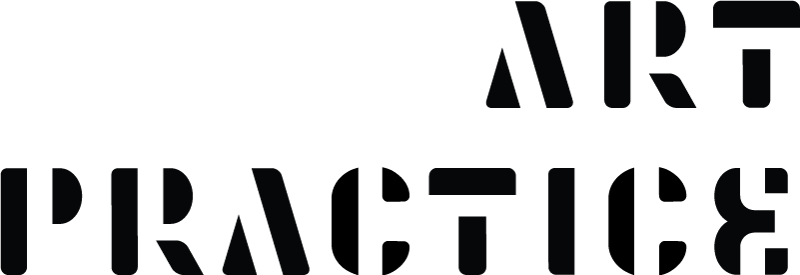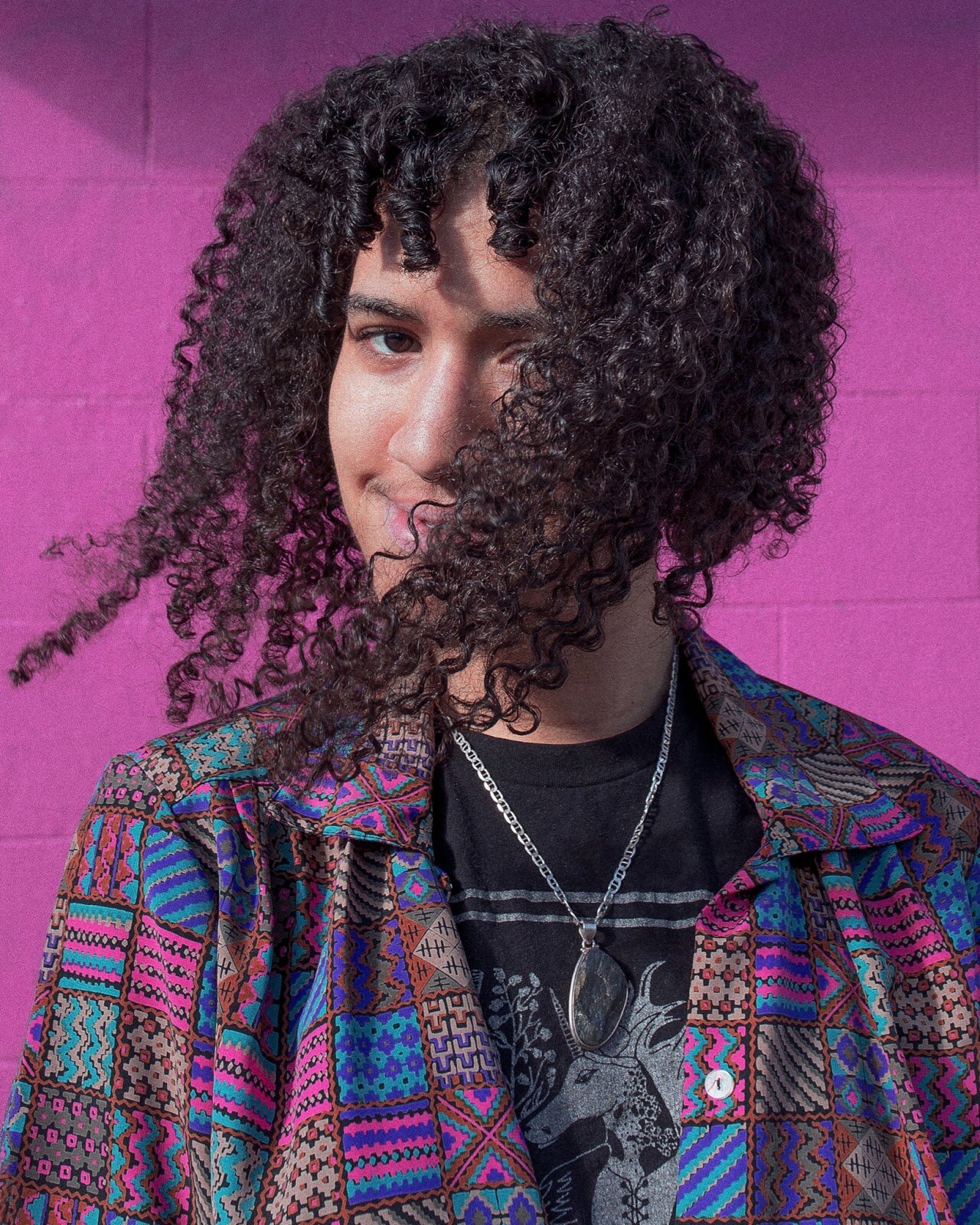Faculty spotlight: Gaia WXYZ
Portrait of lecturer Gaia WXYZ.
Art Practice is pleased to welcome new lecturer Gaia WXYZ to our department! Gaia will teach ART 25 Graphic Novel: Foundations in Summer Session D. (Learn more about this course and the full roster of summer classes on our website.) Gaia was interviewed by Professor Jill Miller about their background in comics, their expansive art practice, and their feelings about celebrating Pride Month.
Gaia’s illustration for San Francisco AIDS Foundation t-shirt
Jill: Gaia, welcome to the Art Practice community! We are so excited that you have joined our department as a lecturer. Can you please share a bit about yourself?
Gaia: I’m beyond excited to be teaching UC Berkeley’s first ever course on making graphic novels. As an artsy weirdo high school graduate in South Florida, Berkeley was actually my top choice for college! But my family wasn’t ready for me to move so far from home, so instead I attended Tufts University, in a Combined Degree program with the School of the Museum of Fine Arts, Boston. I earned a B.A. in American Studies from Tufts, and for my Senior Project wrote a 65 page script for a graphic novel, which earned honors and high praise from my professors. Rather than continuing to study for another year and a half to receive a BFA, I graduated early and moved to Oakland in 2015, since living in the Bay has been my dream for as long as I can remember. Not long after moving here, I attended the Black & Brown Comic Arts Festival in San Francisco, which is where I learned about California College of the Arts’ MFA in Comics Program. That program was instrumental in giving me the skills and confidence to become a professional comic artist. Last year I earned my MFA in Comic Art, which I am incredibly proud of since it happened in the midst of the pandemic! I also work part-time at Silver Sprocket, an independent comics publisher and retailer in the Mission District SF. In that role I have gained valuable insight on how comics publishing and distribution works, and I’m constantly reading new comics by up and coming independent artists, which is a huge source of inspiration as well. As a reader my favorite genres include sci-fi, horror, fantasy, historical non-fiction, and especially autobiography.
Comic by Gaia Weise.
Jill: How long have you been making comics, and how did you begin? Do your comics cover specific topics, and can you tell us about that?
Gaia: It’s hard to remember how I got into comics, because I was so young! Growing up with two older brothers I had a lot of Spiderman and Dragonball Z in my life, and I obsessed over the classics from the comics section of the New York Times, but it was Sailor Moon in particular that was my first favorite comic. I can still remember being in elementary school, checking out Sailor Moon manga from the local library and tracing my favorite images from the books. I was lucky enough to start my artistic training in earnest at age 10, after I auditioned and was accepted to attend the public art middle school in my hometown. There, I gained considerable technical drawing ability before I even started college, but comics were rather openly looked down upon by many art teachers at that phase of my life. I am drawn to comics as a medium for precisely the reasons my art teachers rejected it -- because it stands in high contrast to fine art. It has a totally different history as a medium of the people, and it tells stories in a way that no other medium can. I love how I can wield words, images, abstraction and dynamic panel layouts to make static images exciting and engaging. The project I wrote the script for back in my undergraduate years has morphed into a world building project that is over a decade in the making at this point. It involves a post-oil world, how people survive, all of the ingenious ways they manage to eke out a life with what’s been left for them. I’m creating a vision that, while post-apocalyptic, isn’t a run of the mill dystopian future a-la-Mad Max. While developing that project I have created a number of autobiographical comics that draw from my experience as a Black Queer non-binary person trying to make the most out of life. One of the things I love most about comics is the community of creators I have found myself a part of, it’s full of other Queer people of color who I love and respect tremendously. I find lots of inspiration from other comic artists, and although my list of favorite artists is too long to include here, it includes Lynda Barry, Ron Wimberly, Moebius, Dave Gibbons, Nina Bunjevac and Satoshi Kon. The comics world is huge and tiny at the same time; people I went to school with are now having comics published in the New Yorker, getting book deals and generally accomplishing things that most people only dream of. I want to teach other people that it’s possible to see your comics out there in the world, and that it’s not as difficult as you may think!
Jill: You work in many forms in addition to comics. Can you tell me a bit about that?
Gaia: Since I’ve been doing art in a serious way for over 20 years now, I’ve been lucky enough to experiment in a wide range of media. From darkroom photography, to performance art, to steel welding and lost wax casting, I really have tried just about every type of art you can imagine. In addition to drawing and writing comics, I am also a freelance illustrator/graphic designer. In the past year I have been lucky enough to be contacted by multiple Queer-led businesses and non-profits to produce a variety of projects, from window murals to animated clips. It’s such an amazing opportunity to be creating work that my community engages with directly. For me, to be able to share my experiences and my values through art is the most important thing I can do as an artist! I really love this quote by Toni Cade Bambara: “As a culture worker who belongs to an oppressed people my job is to make revolution irresistible.” But the other important thing about being an artist is to see your practice as a process, to realize that there’s no substitute for spending time doing the work, and to not get wrapped up in the current trend of “content creation”. It’s okay to do work that no one will ever see, and I think that in order to make great art (comics or otherwise) you have to make a lot of mediocre work, to try and fail, and see what works! I plan on bringing that artistic philosophy to the classroom. I’m re-reading Making Comics by Lynda Barry (recent MacArthur Genius Grant recipient!) to gear up for teaching this class, and it’s a title that I recommend everyone read, especially if you feel like you “can’t draw” or “aren’t an artist”.
Jill: I saw the gorgeous t-shirt you illustrated for the San Francisco AIDs Foundation website. Can you talk a little bit about what Pride Month means to you?
Gaia: Pride month represents a time when we can pay respect to the Queer ancestors who had it even harder than we did, who fought with their lives to create a world where we could live and love openly. Pride is a moment to enjoy the pleasure of witnessing each other’s unique fabulousness, and it can be a hell of a party, too! I always attend the Dyke March and Trans March in San Francisco, but Sunday Pride parade isn't as appealing to me. Corporate capitalism has appropriated this generations-long struggle with rainbow flags superimposed on brand logos for one month out of the year, which is frustrating to say the least, but to me Pride will always be sitting in Dolores Park awash in the love of my community, just taking in all of that beauty, and I wanted to portray that in the T-shirt design for an organization on the front lines fighting for HIV+ people, an issue that is central to my Queer community. I did not grow up in a place, or at a time, when being LGBTQ was widely accepted. I also never formally “came out” to my family, or had a turning point where I started to act differently, I’ve just always known I was different than most. I was bullied from early childhood for being different in many ways, and I was called “gay” as a slur before I even knew what the word meant. It warms my heart to see how the generation after me is rejecting homophobia and transphobia, and it gives me hope for the future.



